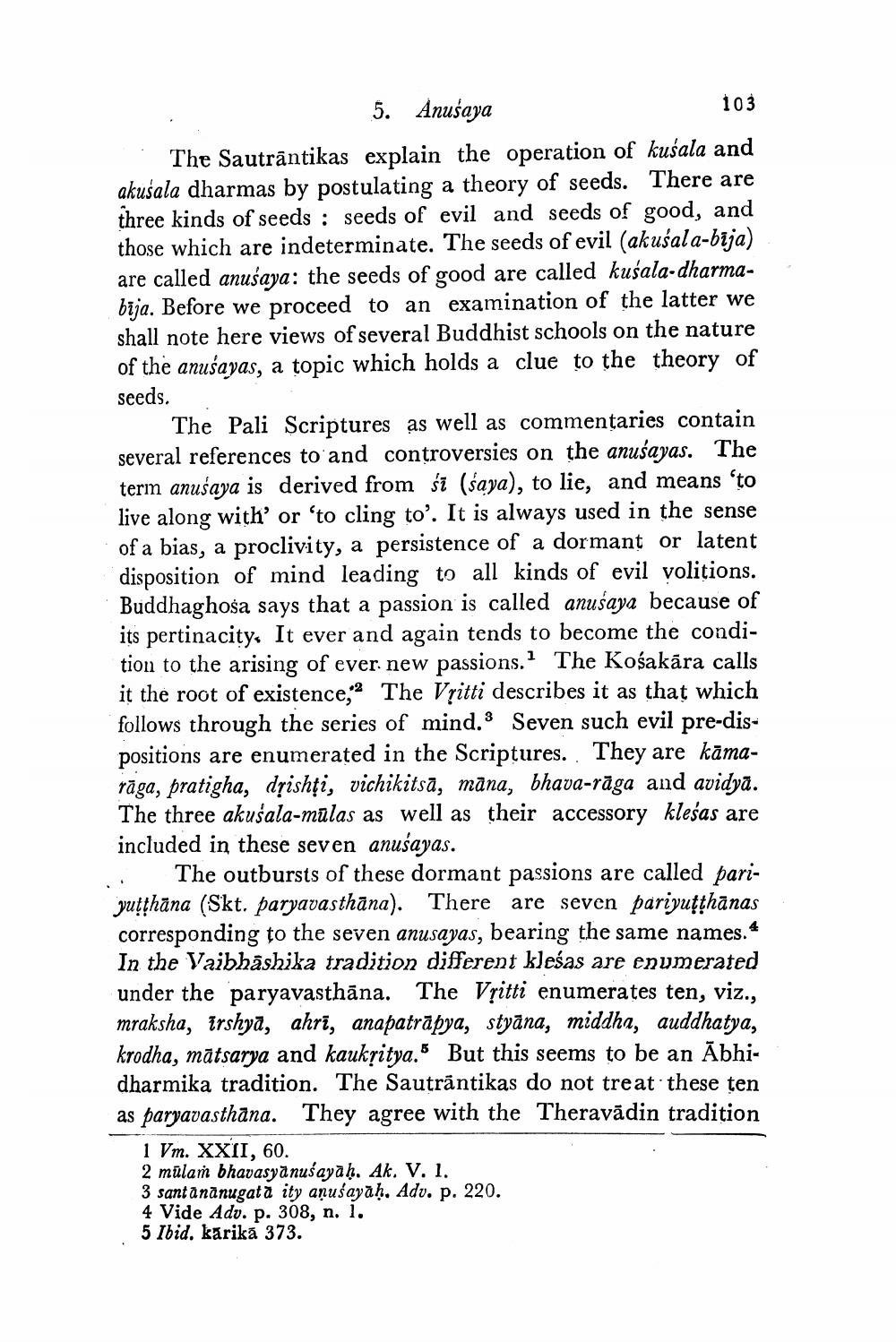________________ 5. Anusaya 103 The Sautrantikas explain the operation of kusala and akusala dharmas by postulating a theory of seeds. There are three kinds of seeds : seeds of evil and seeds of good, and those which are indeterminate. The seeds of evil (akusala-bija) are called anusaya: the seeds of good are called kusala-dharmabija. Before we proceed to an examination of the latter we shall note here views of several Buddhist schools on the nature of the anusayas, a topic which holds a clue to the theory of seeds. The Pali Scriptures as well as commentaries contain several references to and controversies on the anusayas. The term anusaya is derived from si (saya), to lie, and means 'to live along with' or 'to cling to'. It is always used in the sense of a bias, a proclivity, a persistence of a dormant or latent disposition of mind leading to all kinds of evil volitions. Buddhaghosa says that a passion is called anusaya because of its pertinacity. It ever and again tends to become the condition to the arising of ever. new passions. The Kosakara calls it the root of existence,2 The Vritti describes it as that which follows through the series of mind.3 Seven such evil pre-dispositions are enumerated in the Scriptures. They are kamaraga, pratigha, drishti, vichikitsa, mana, bhava-raga and avidya. The three akusala-mulas as well as their accessory klesas are included in these seven anusayas. The outbursts of these dormant passions are called pariyutthana (Skt. paryavasthana). There are seven pariyutthanas corresponding to the seven anusayas, bearing the same names. In the Vaibhashika tradition different klesas are enumerated under the paryavasthana. The Vaitti enumerates ten, viz., mraksha, Irshya, ahri, anapatrapya, styana, middha, auddhatya, krodha, matsarya and kaukritya." But this seems to be an Abhidharmika tradition. The Sautrantikas do not treat these ten as paryavasthana. They agree with the Theravadin tradition 1 Vm. XXII, 60. 2 mulam bhavasyanusayah. Ak. V. 1. 3 sant ananugata ity anusayah, Adv. p. 220. 4 Vide Adv. p. 308, n. 1. 5 Ibid. karika 373.




